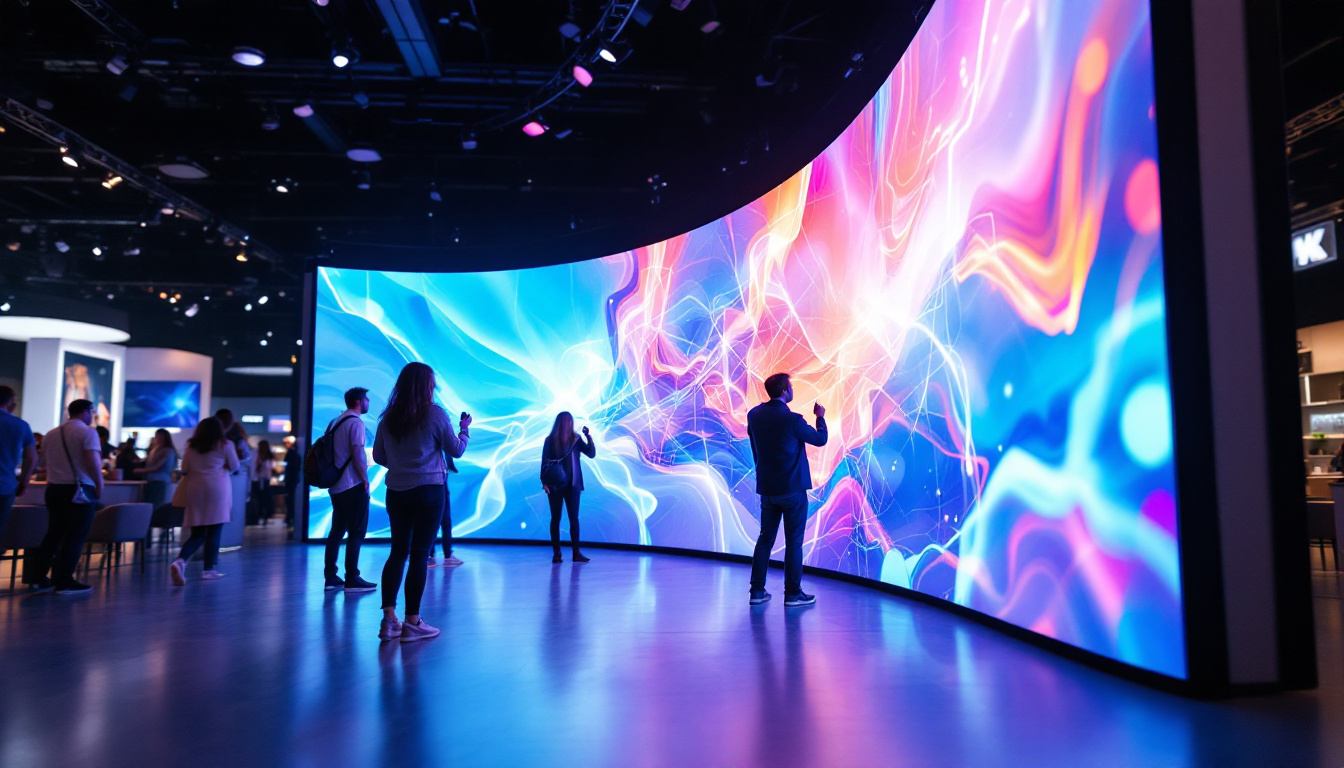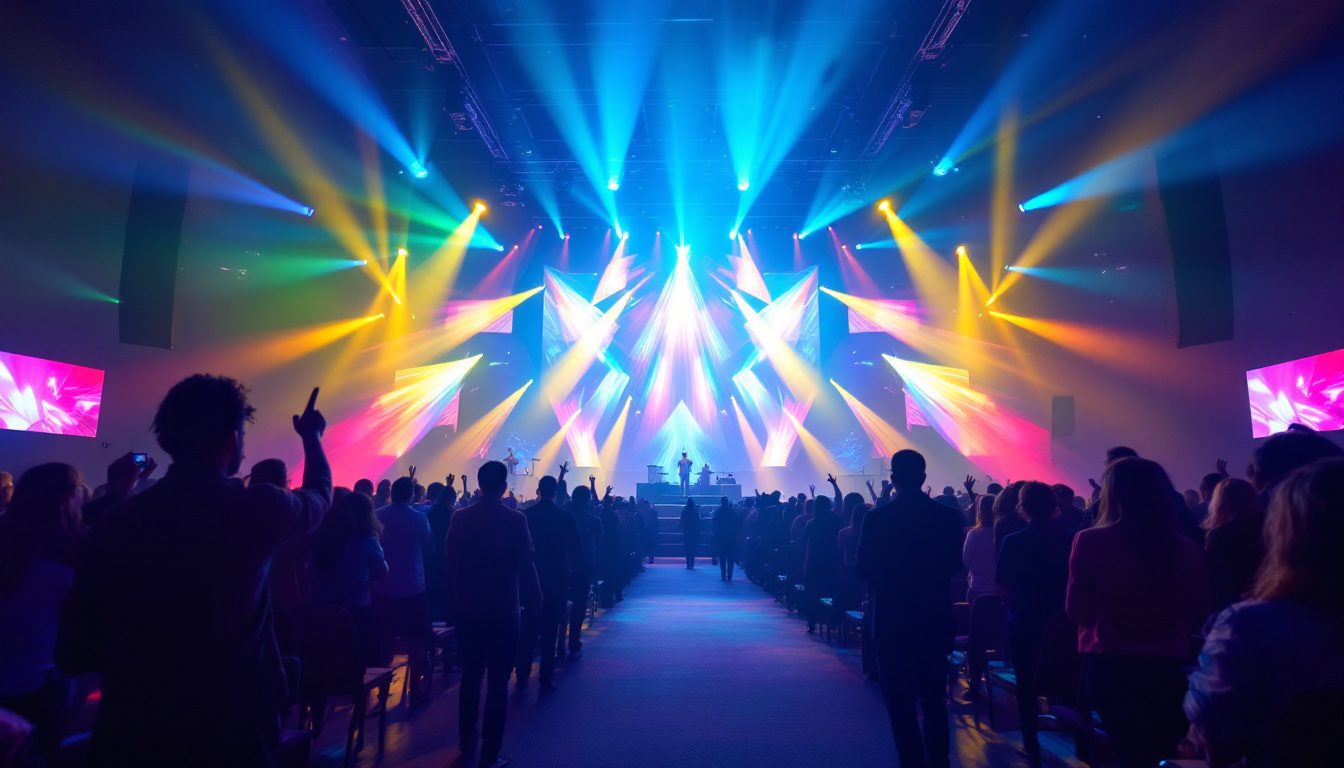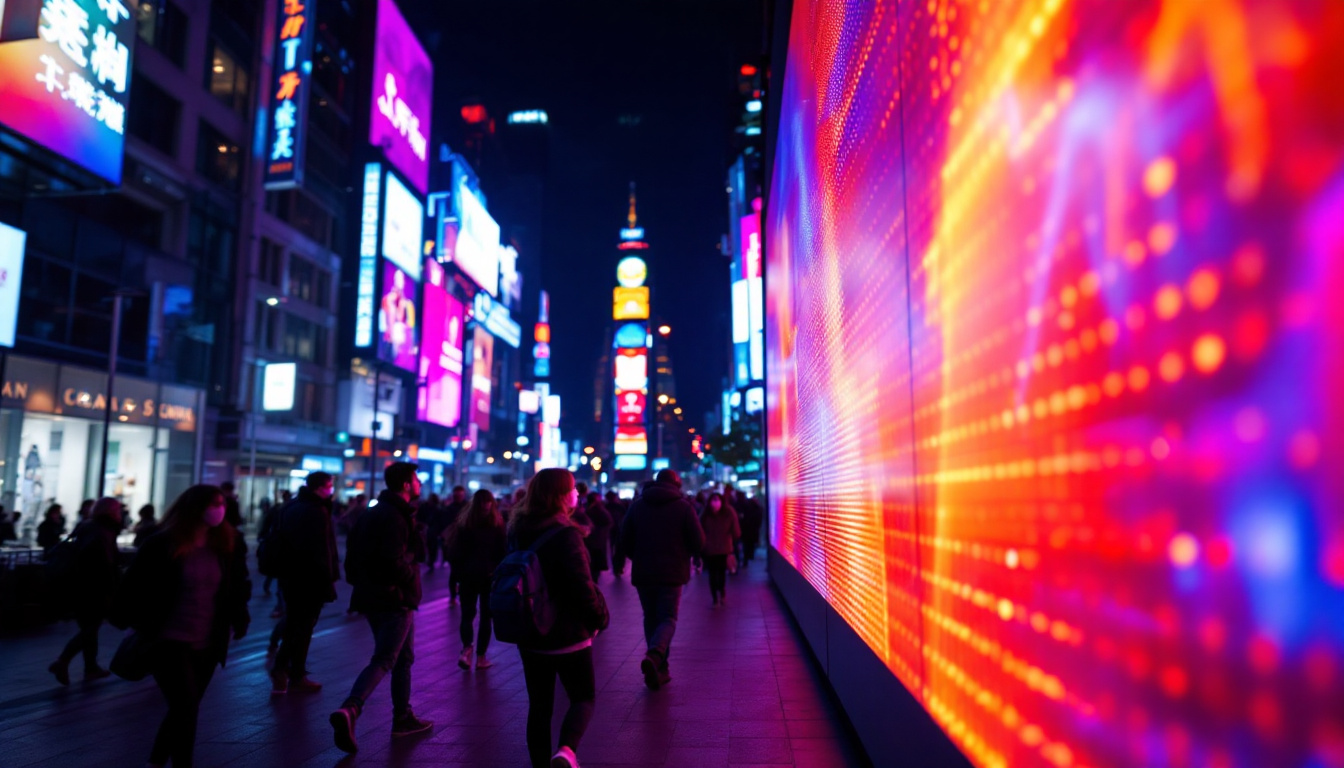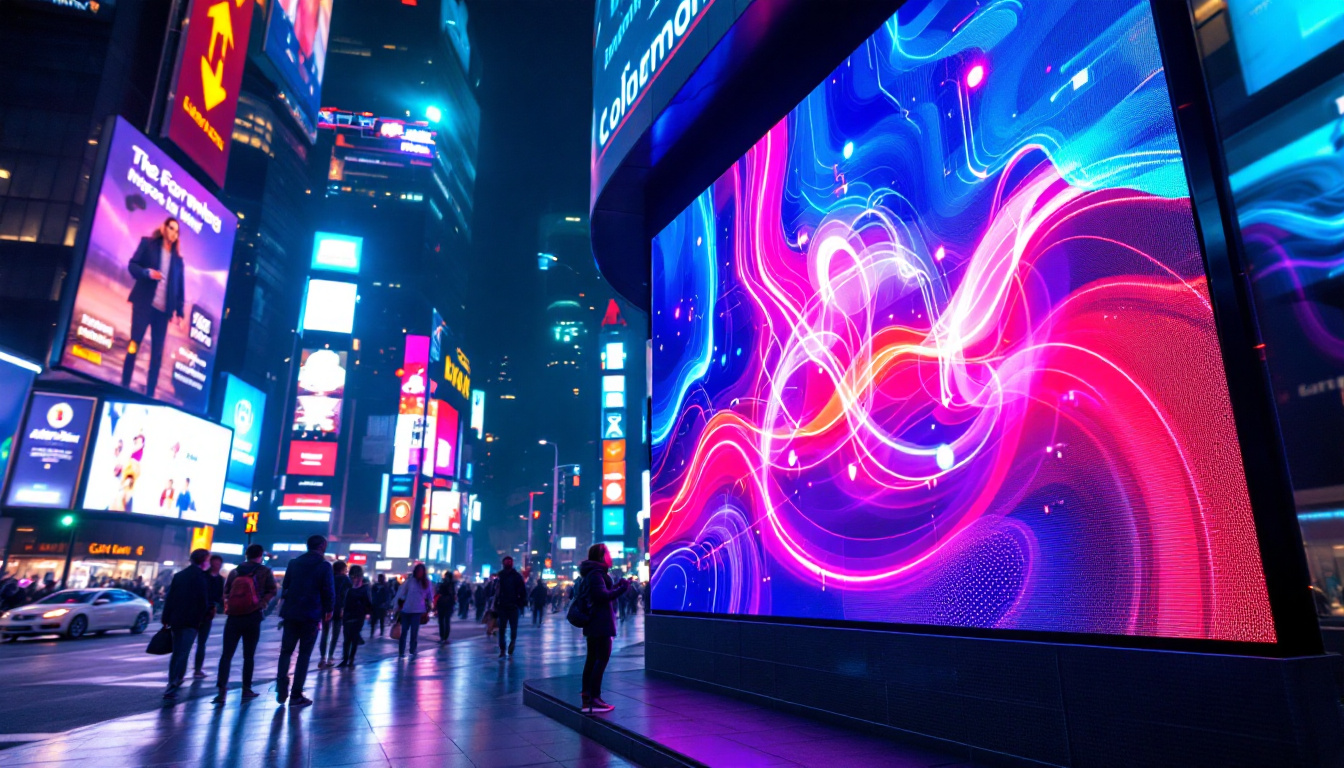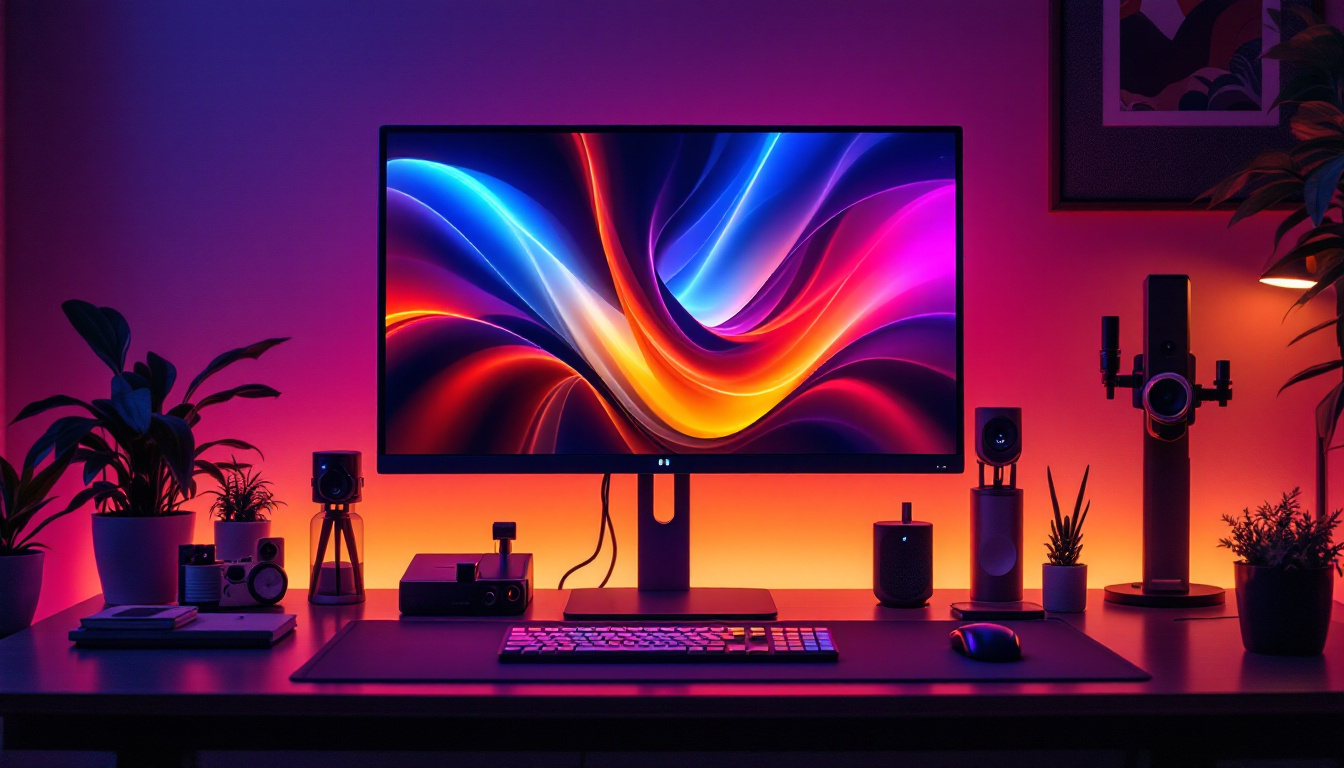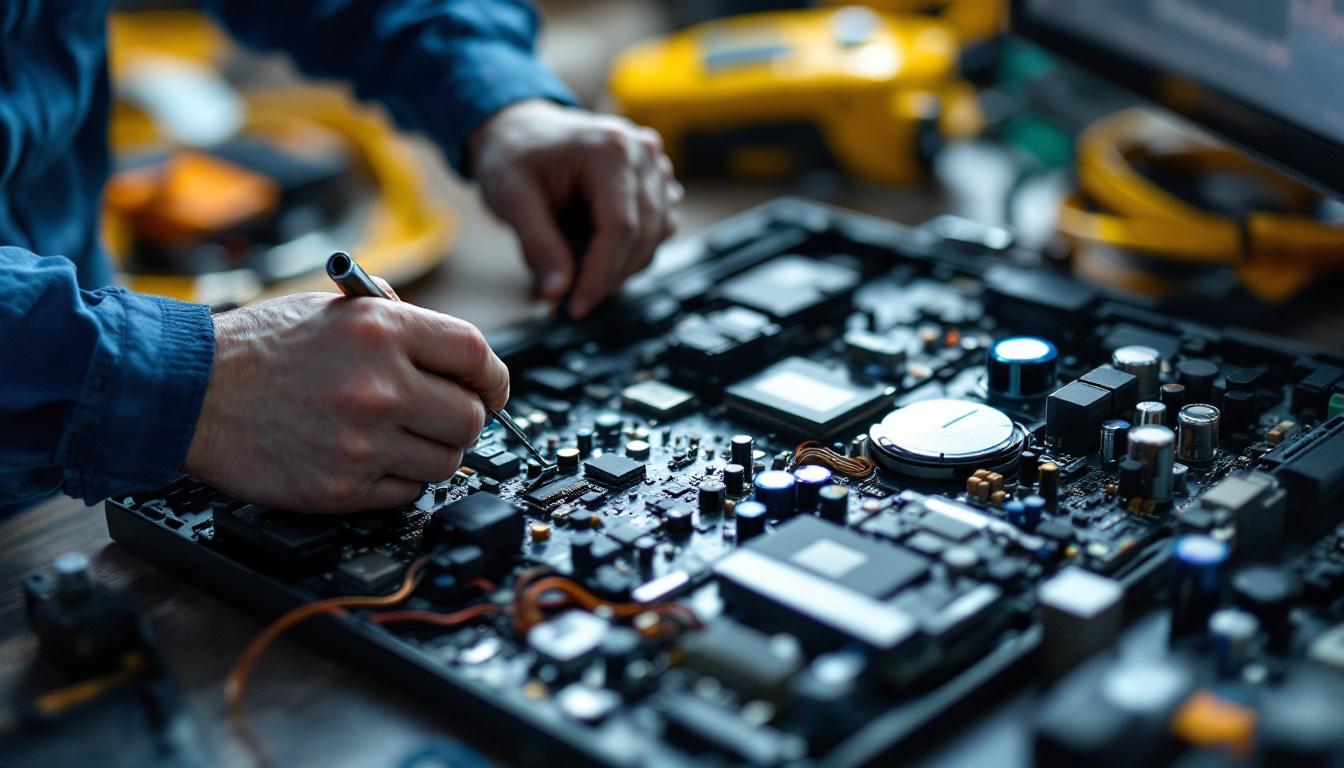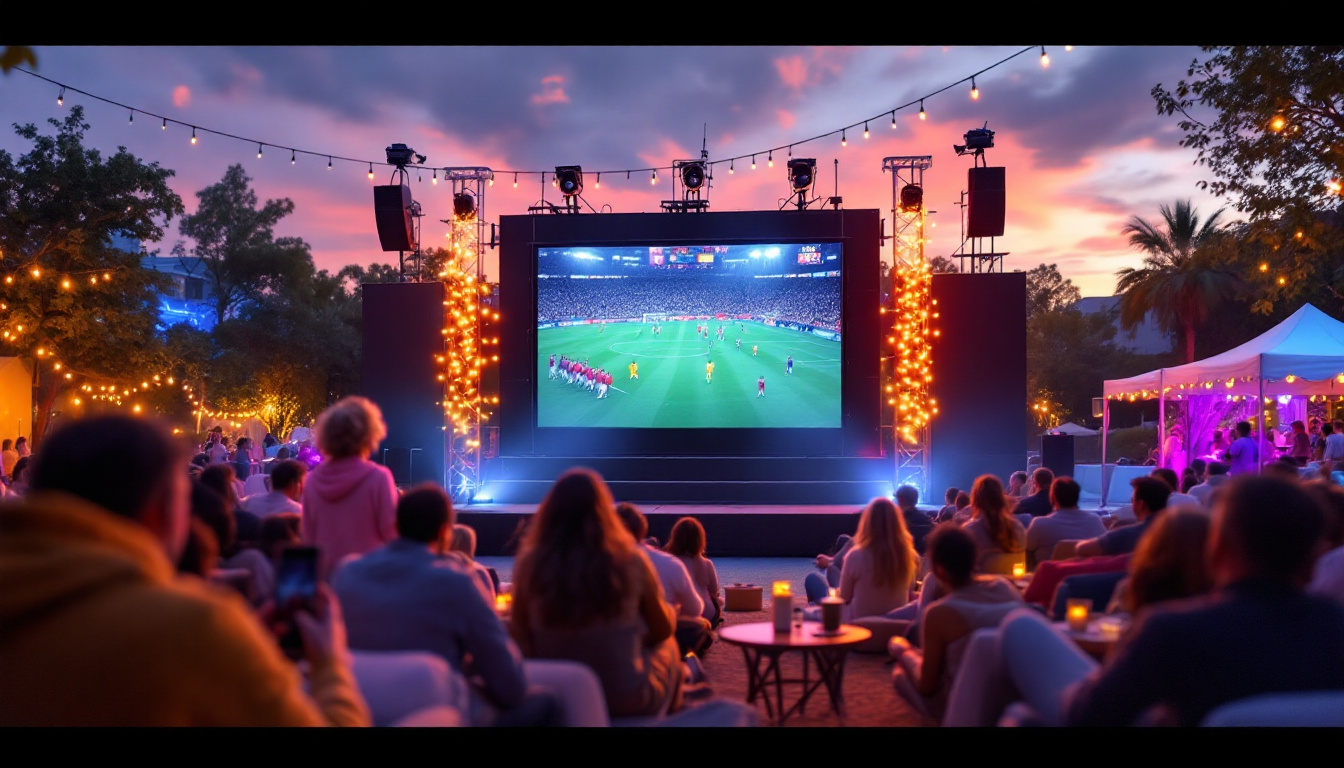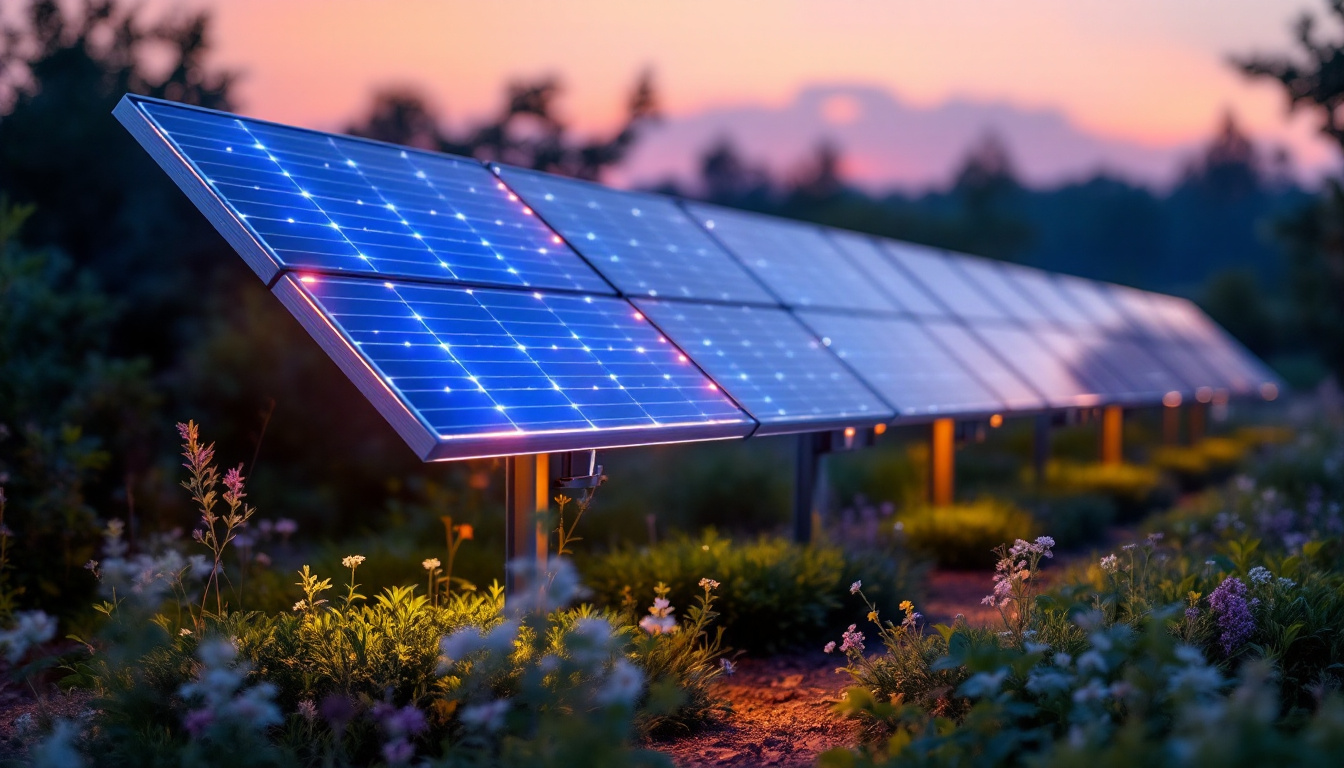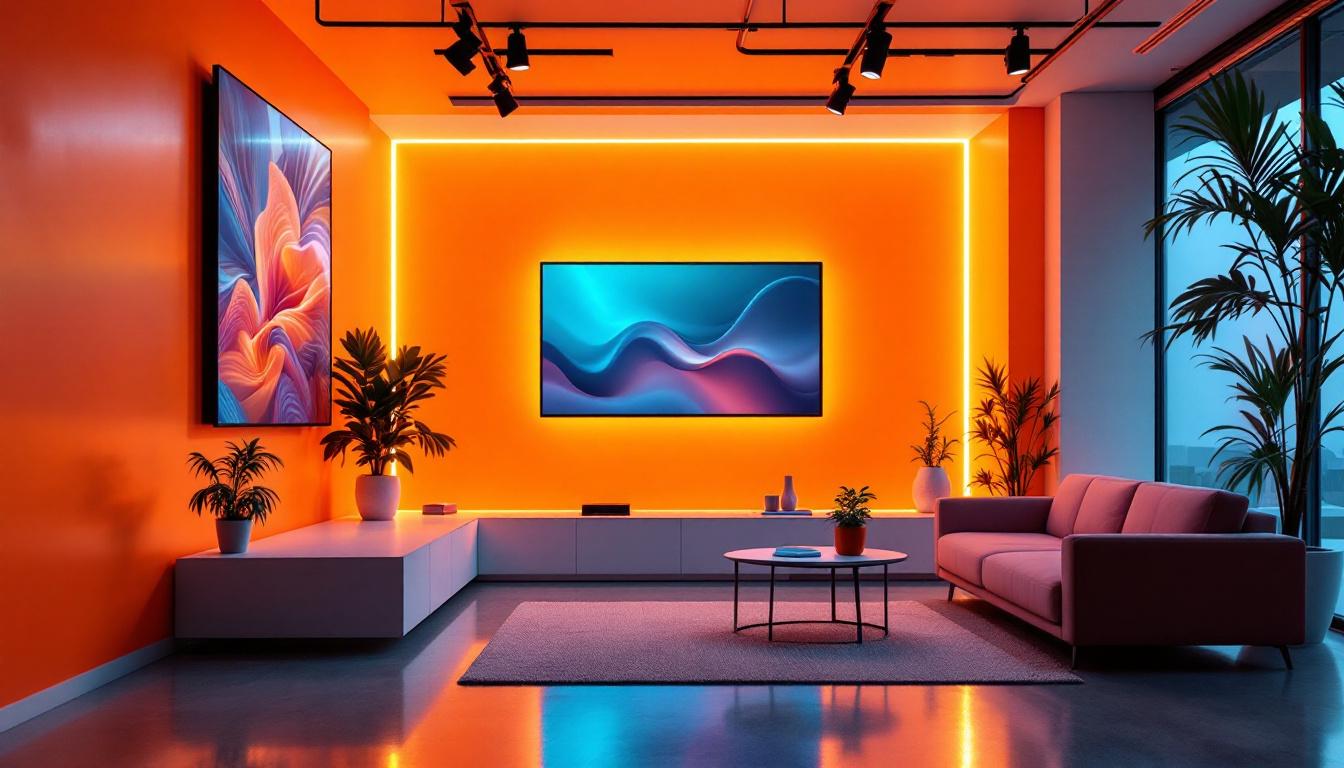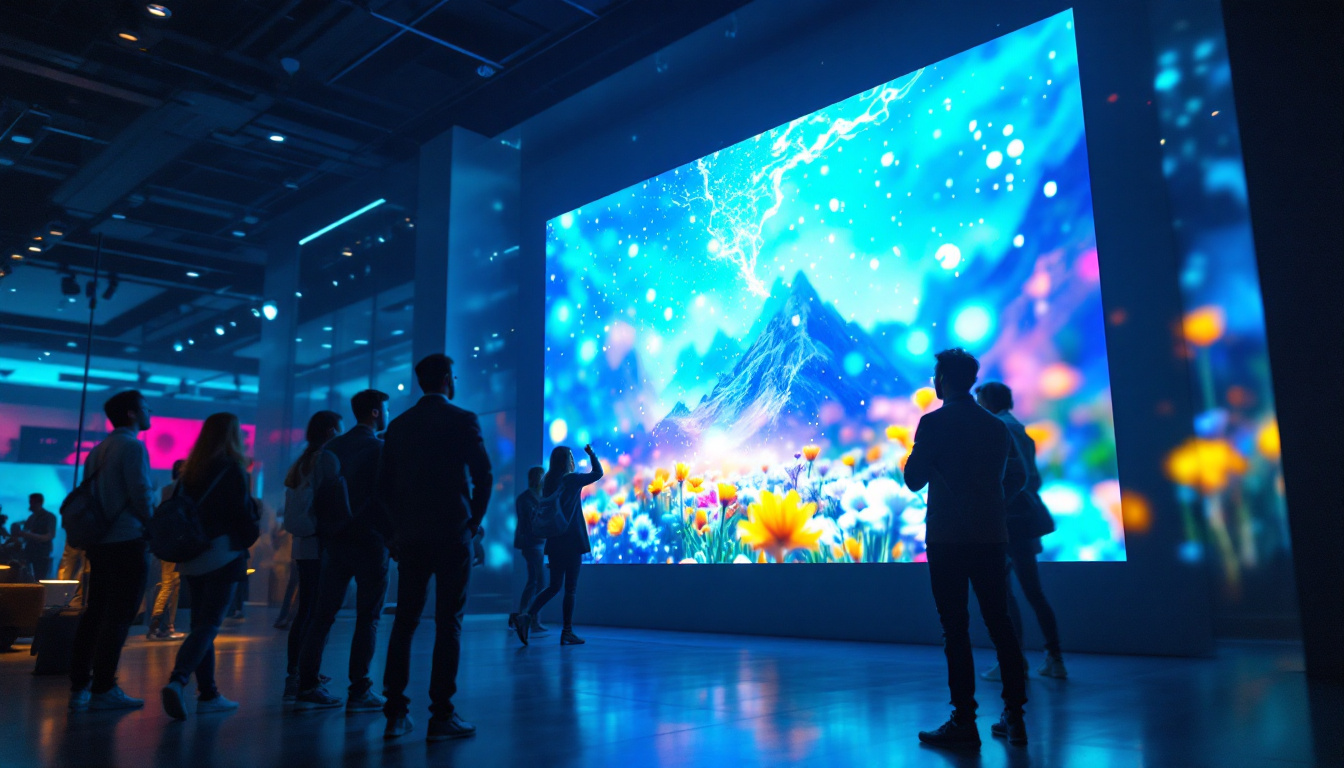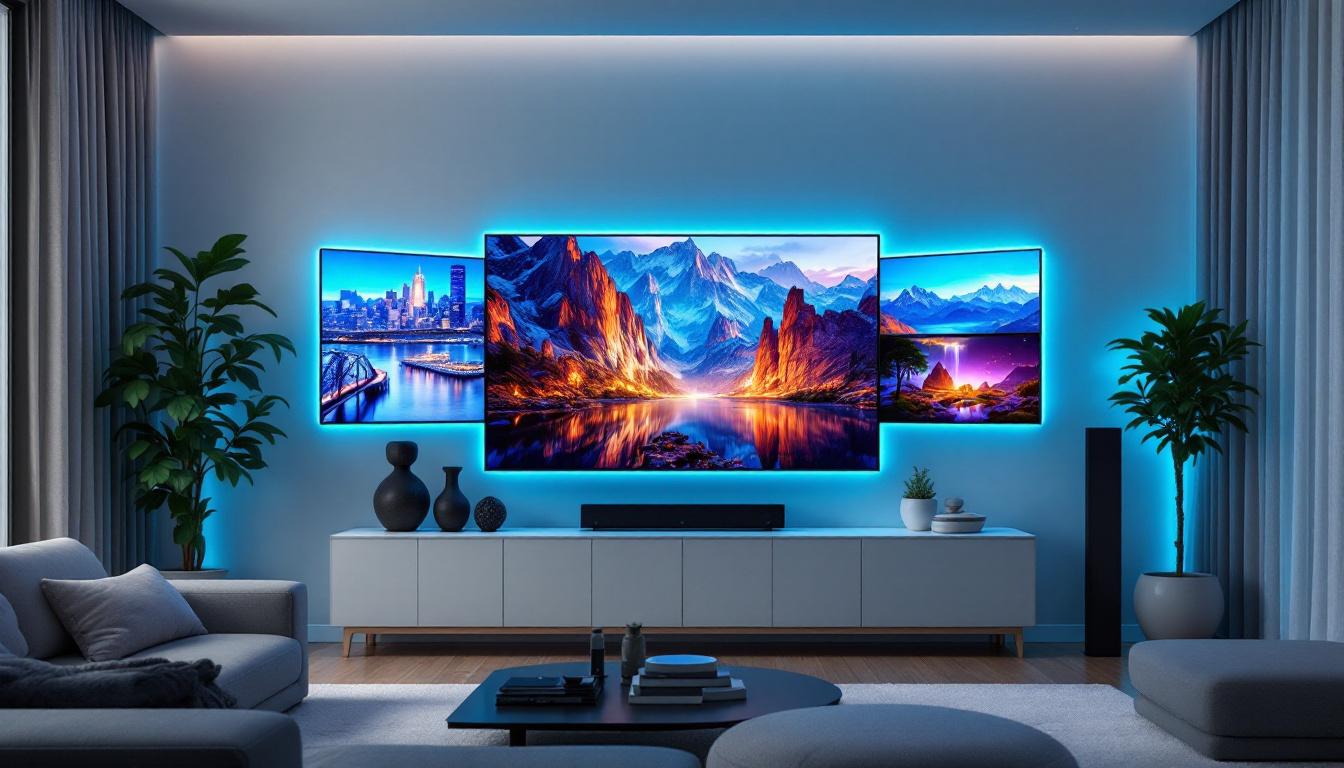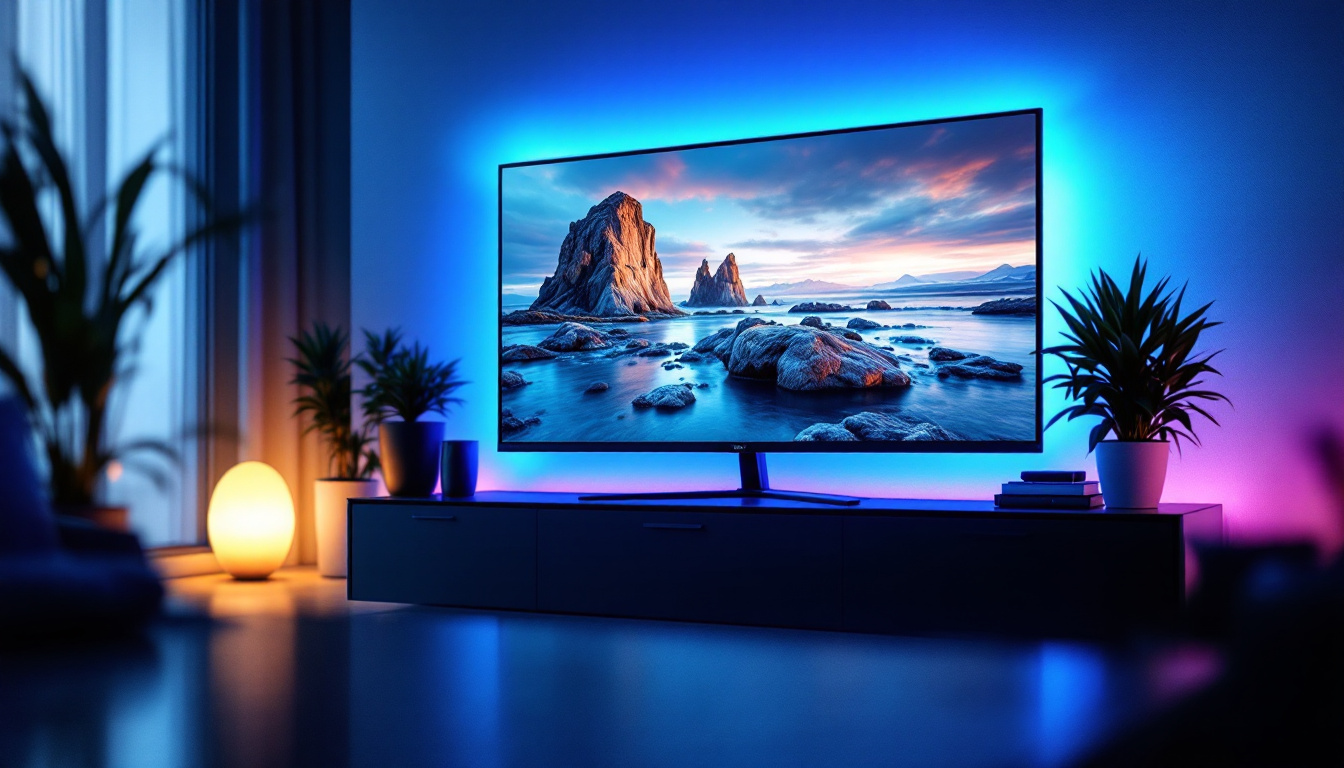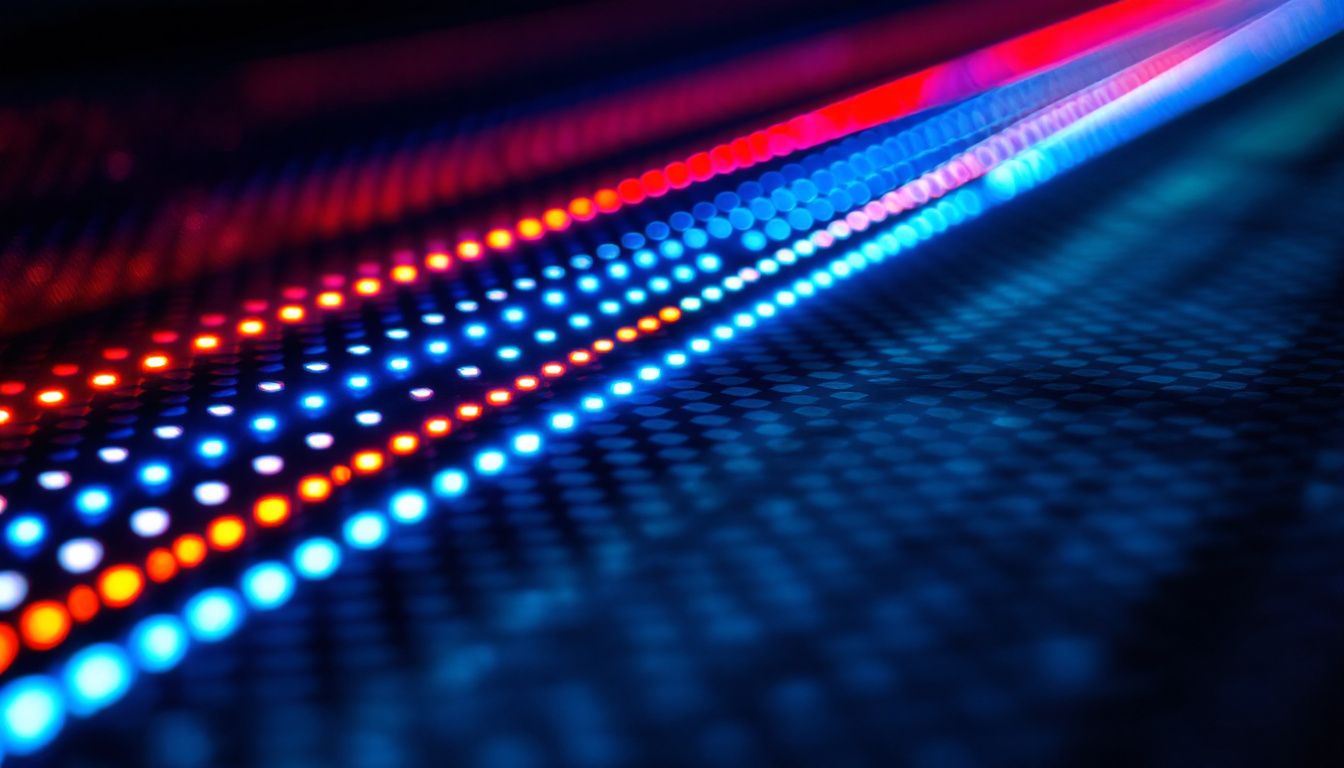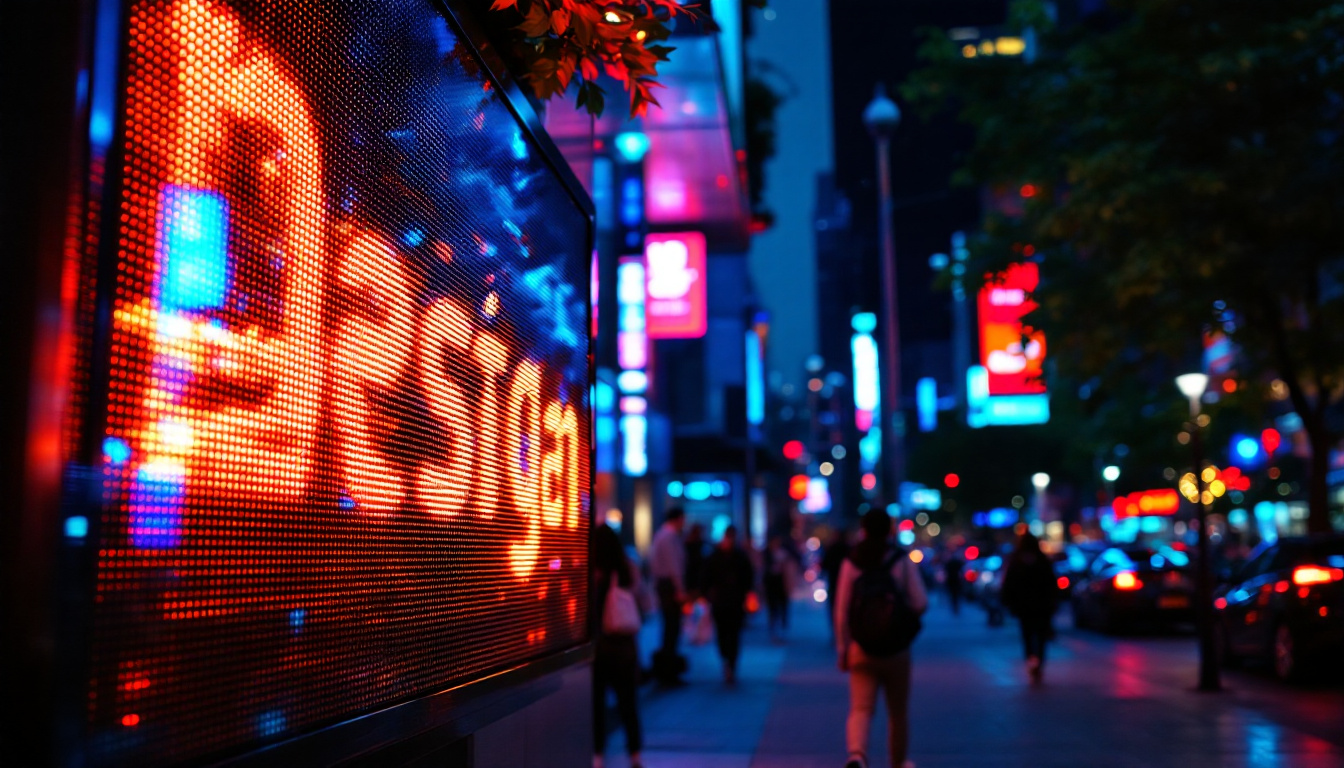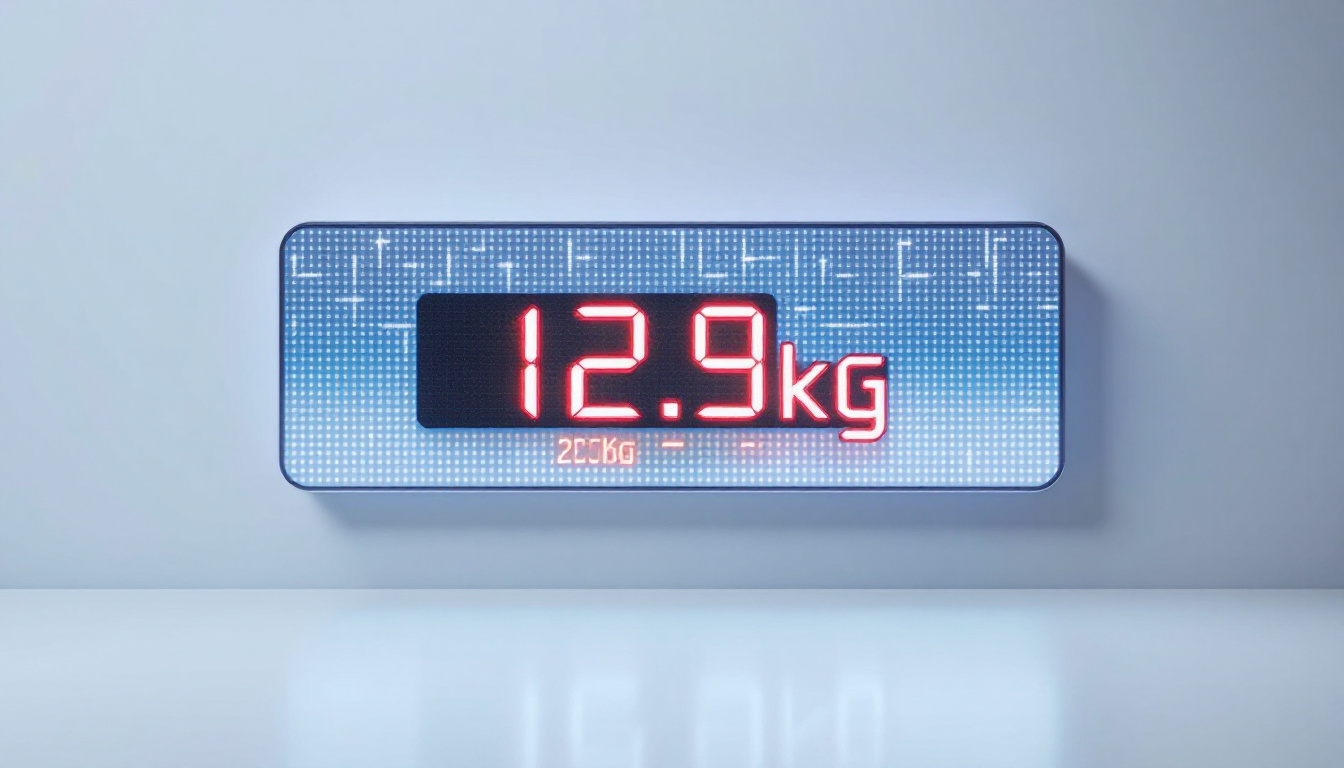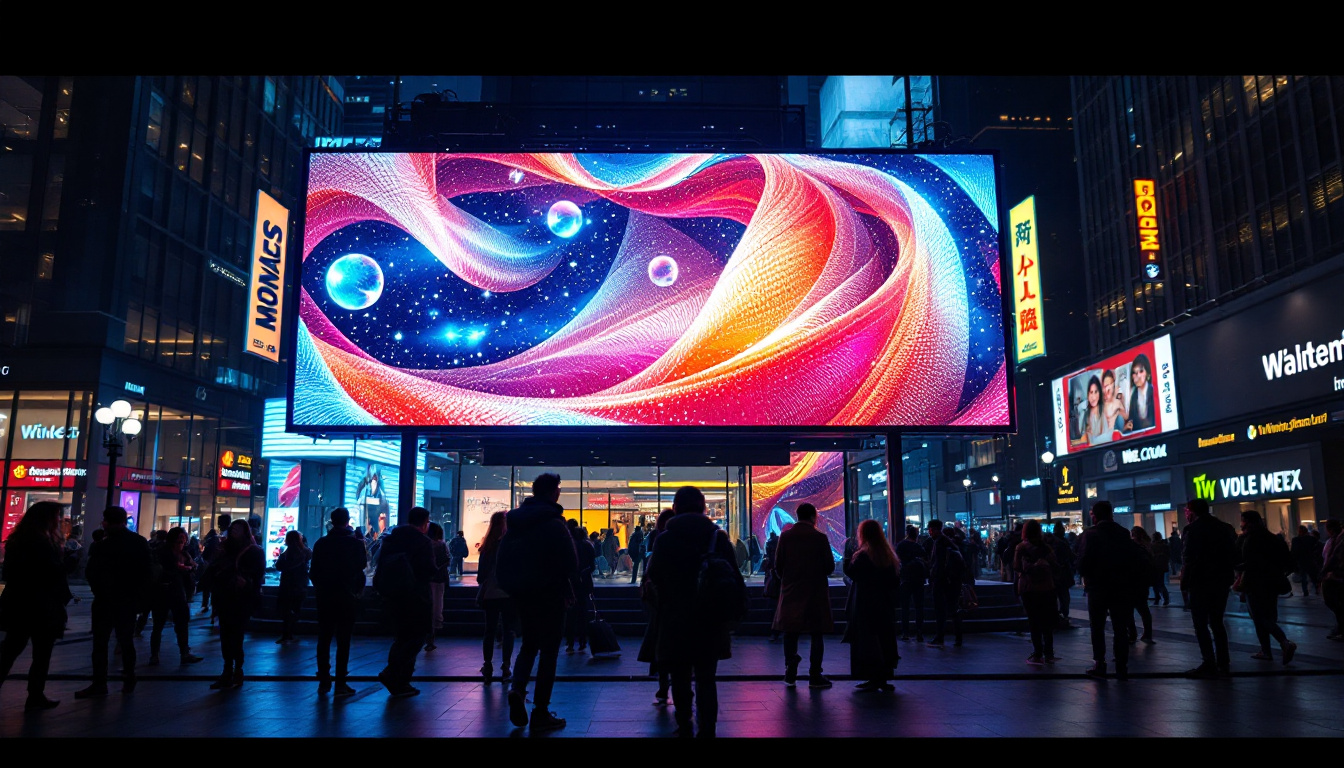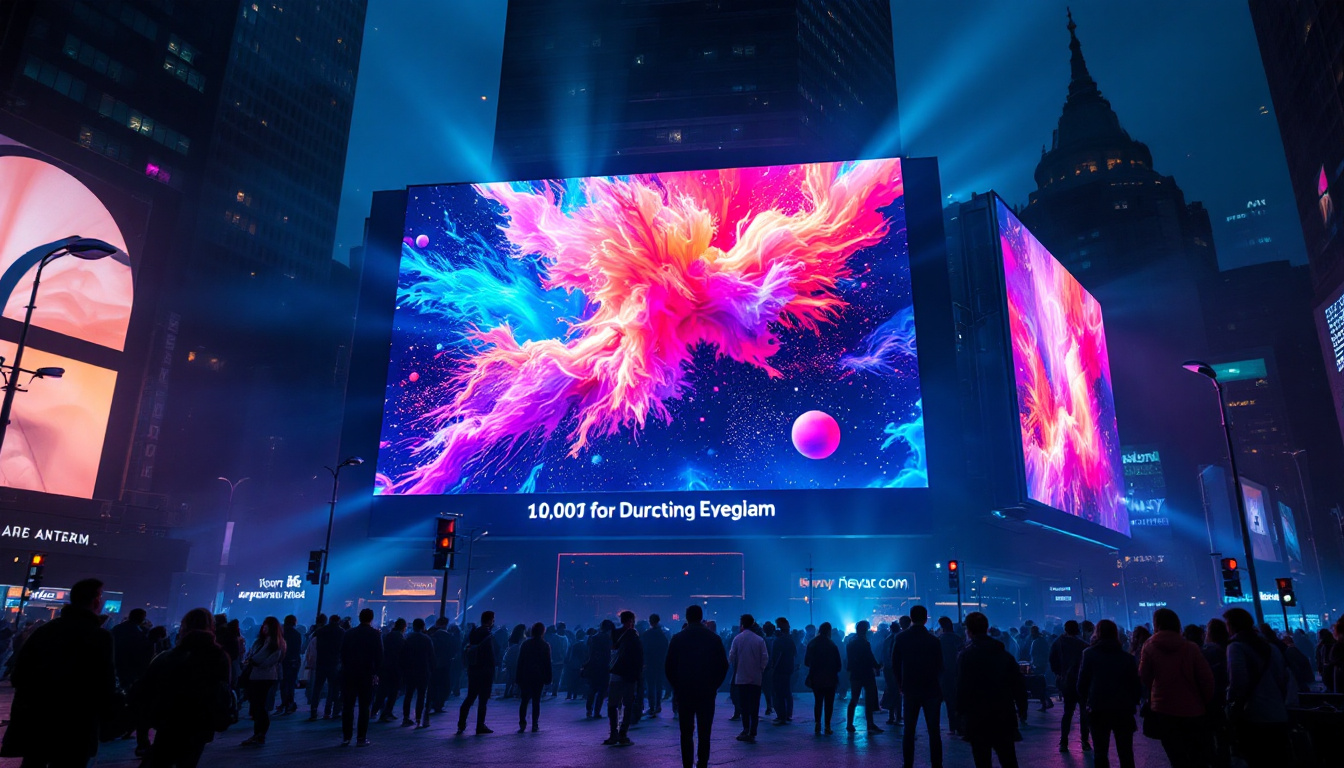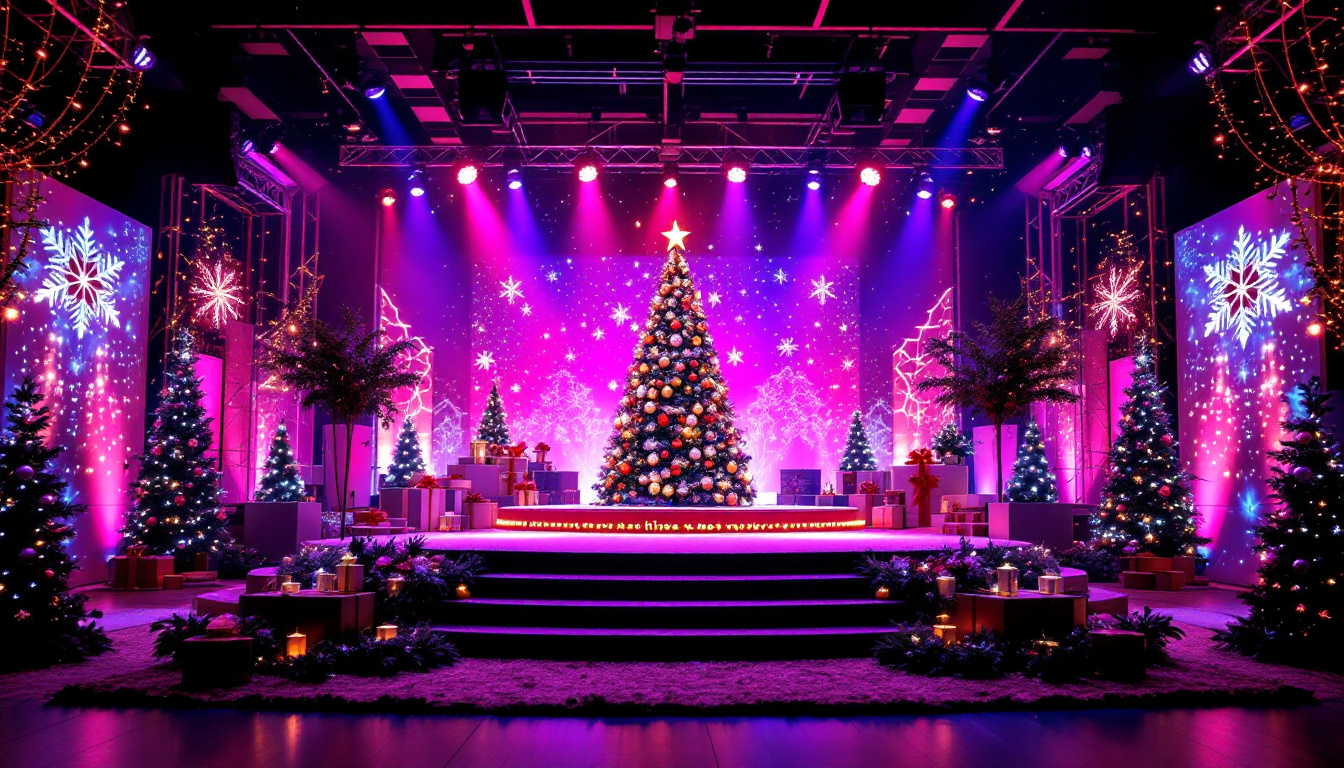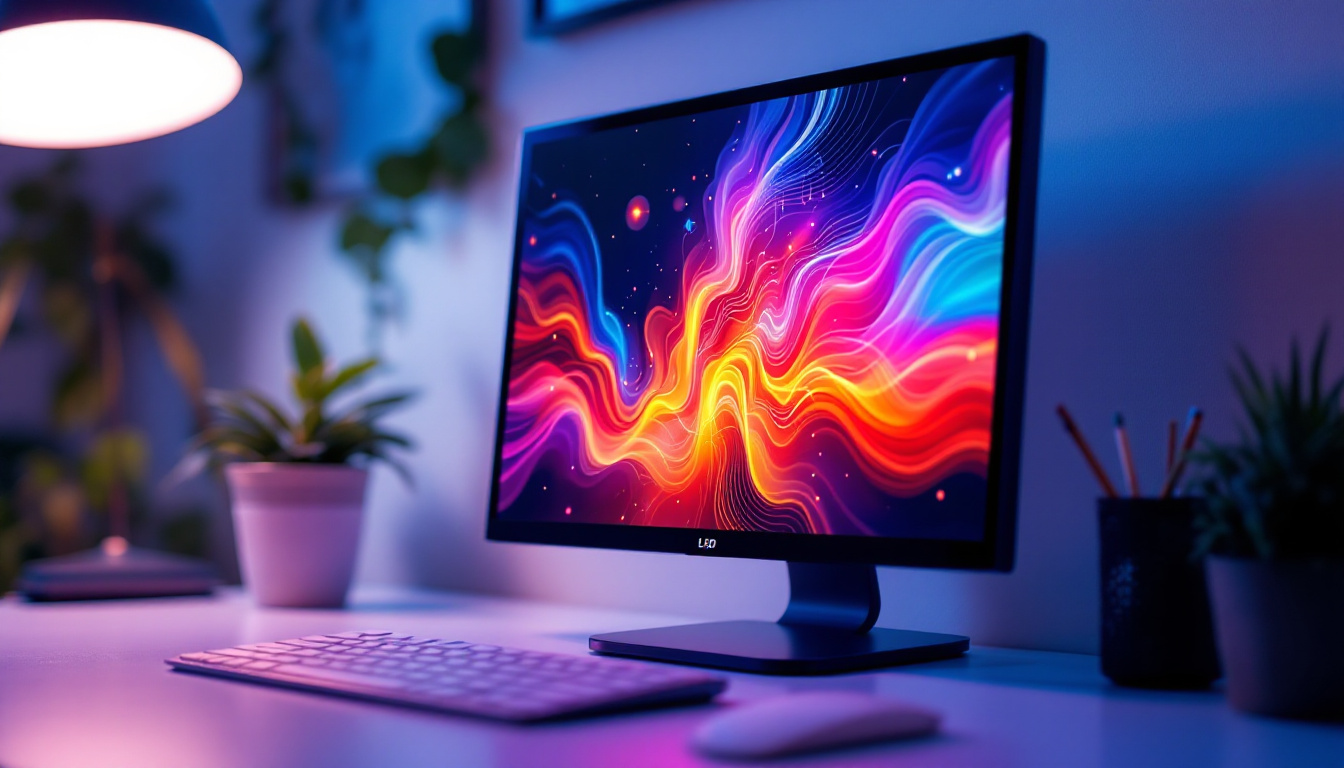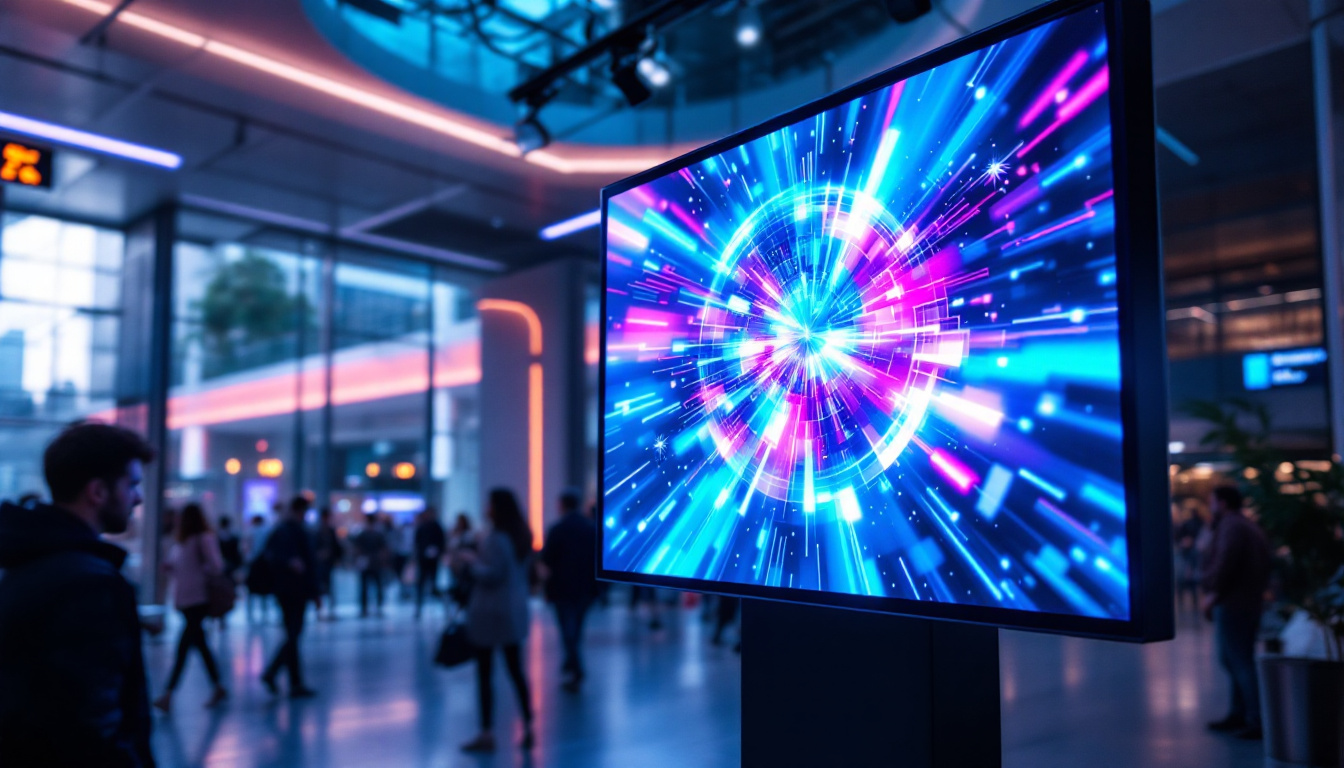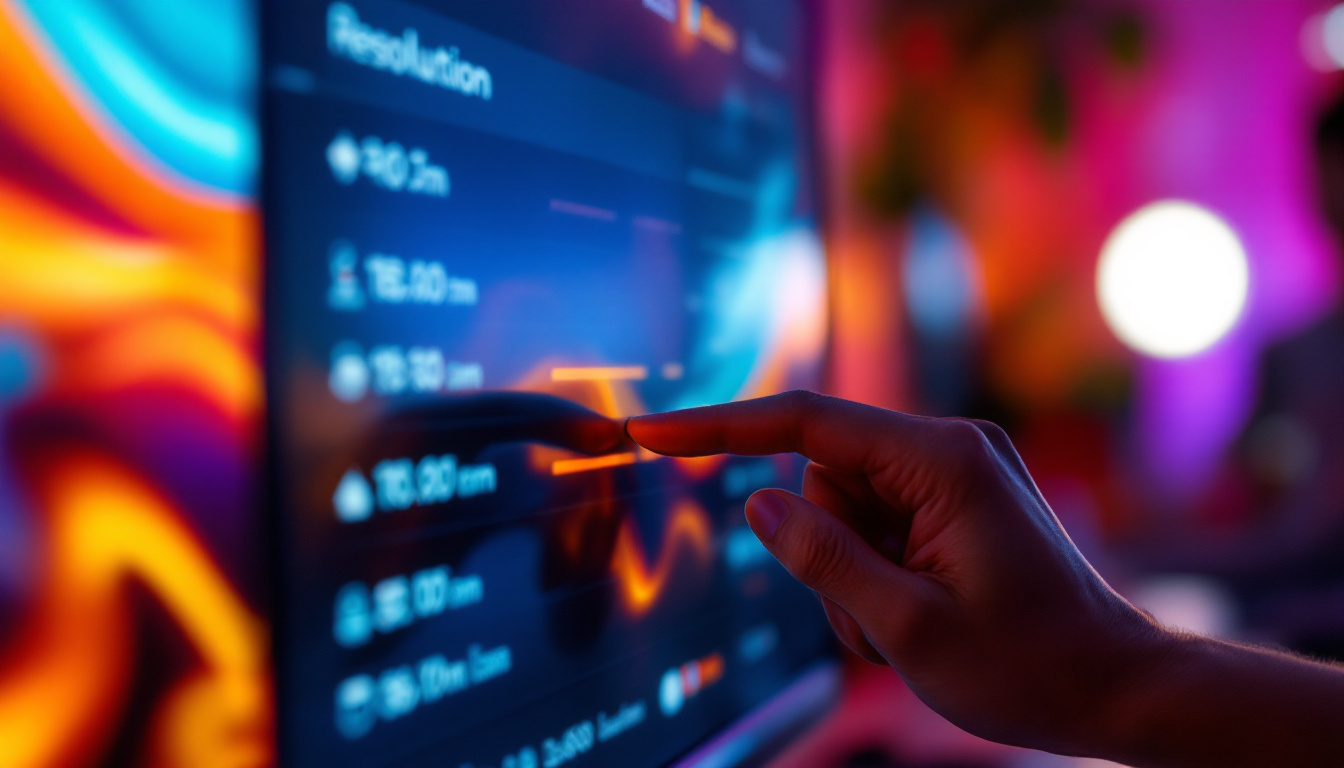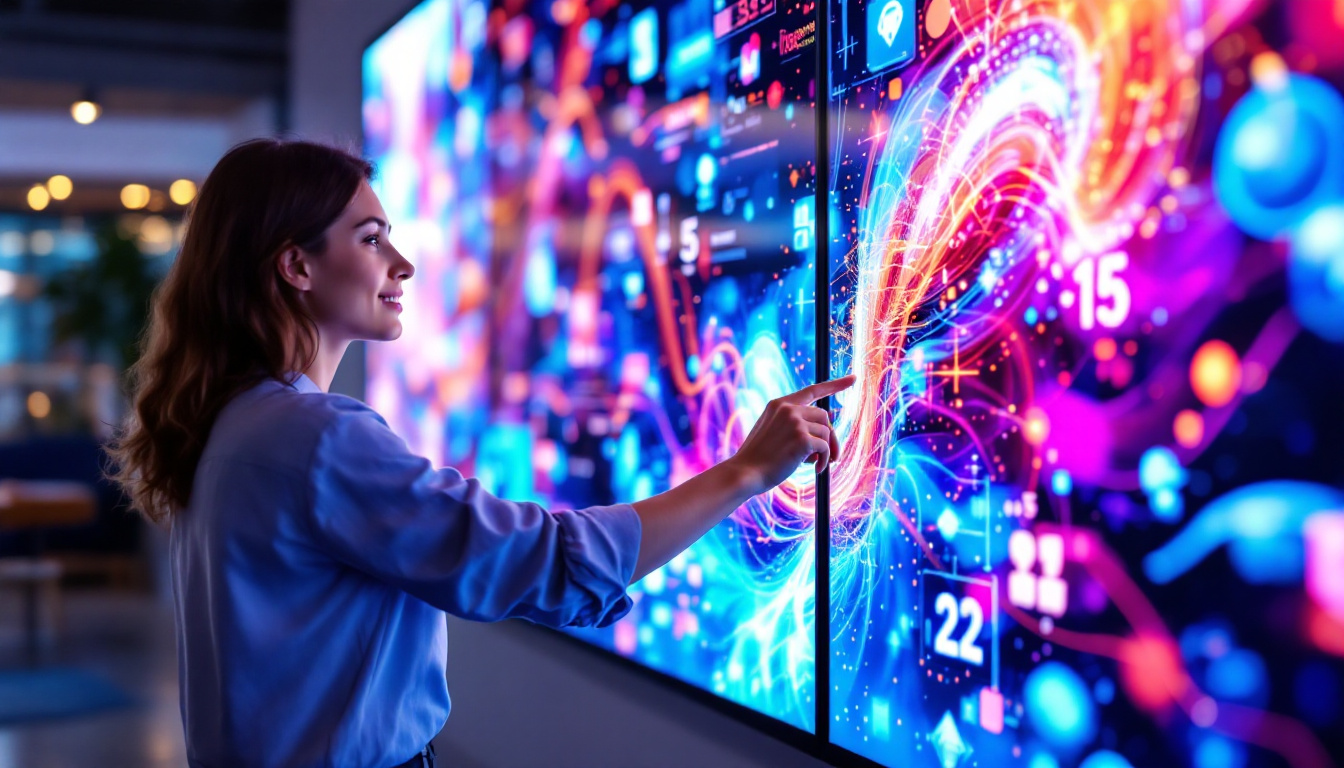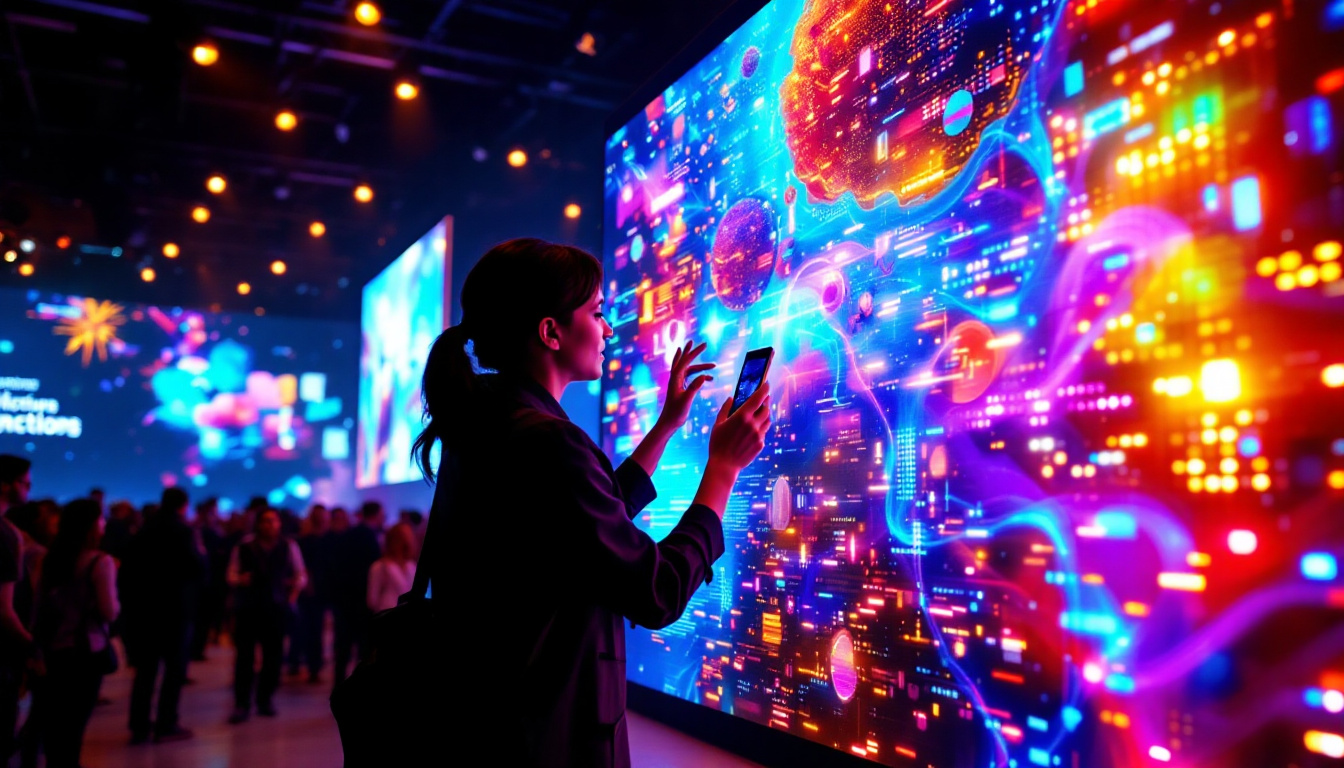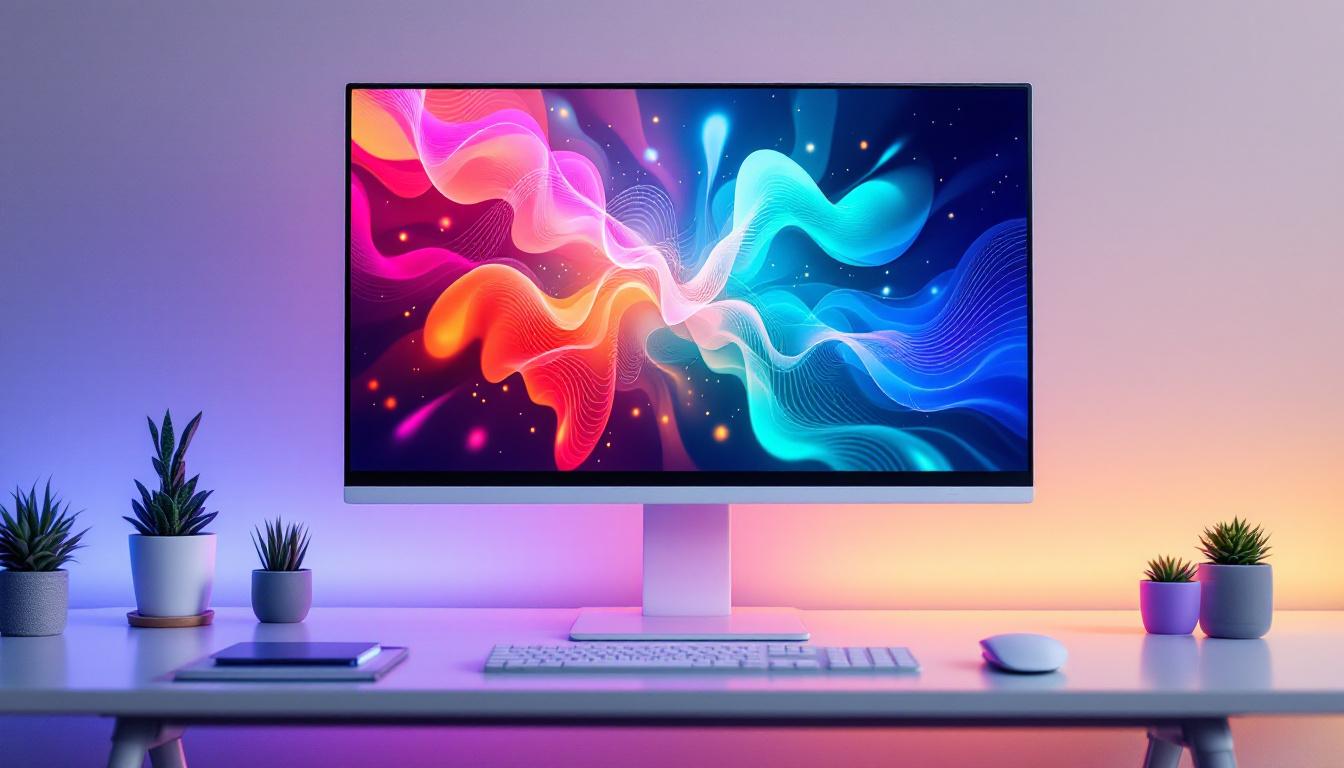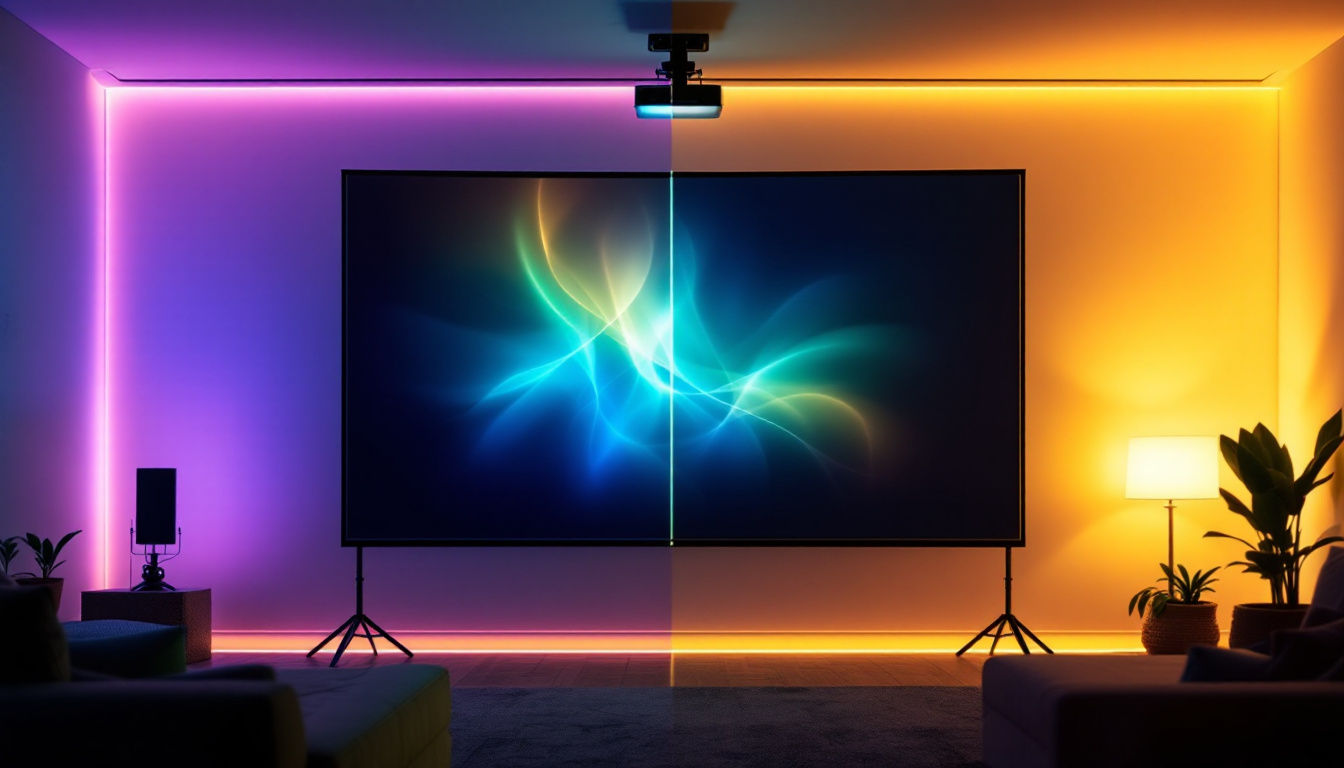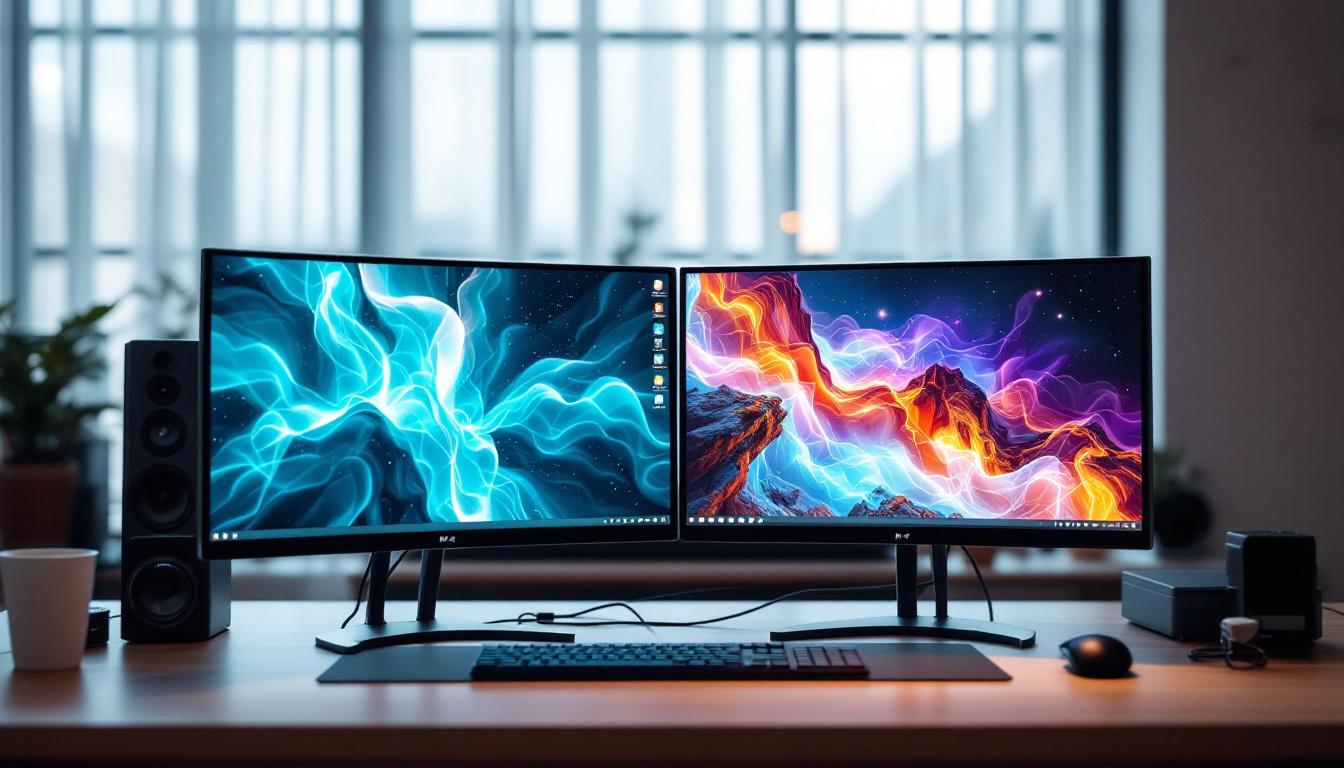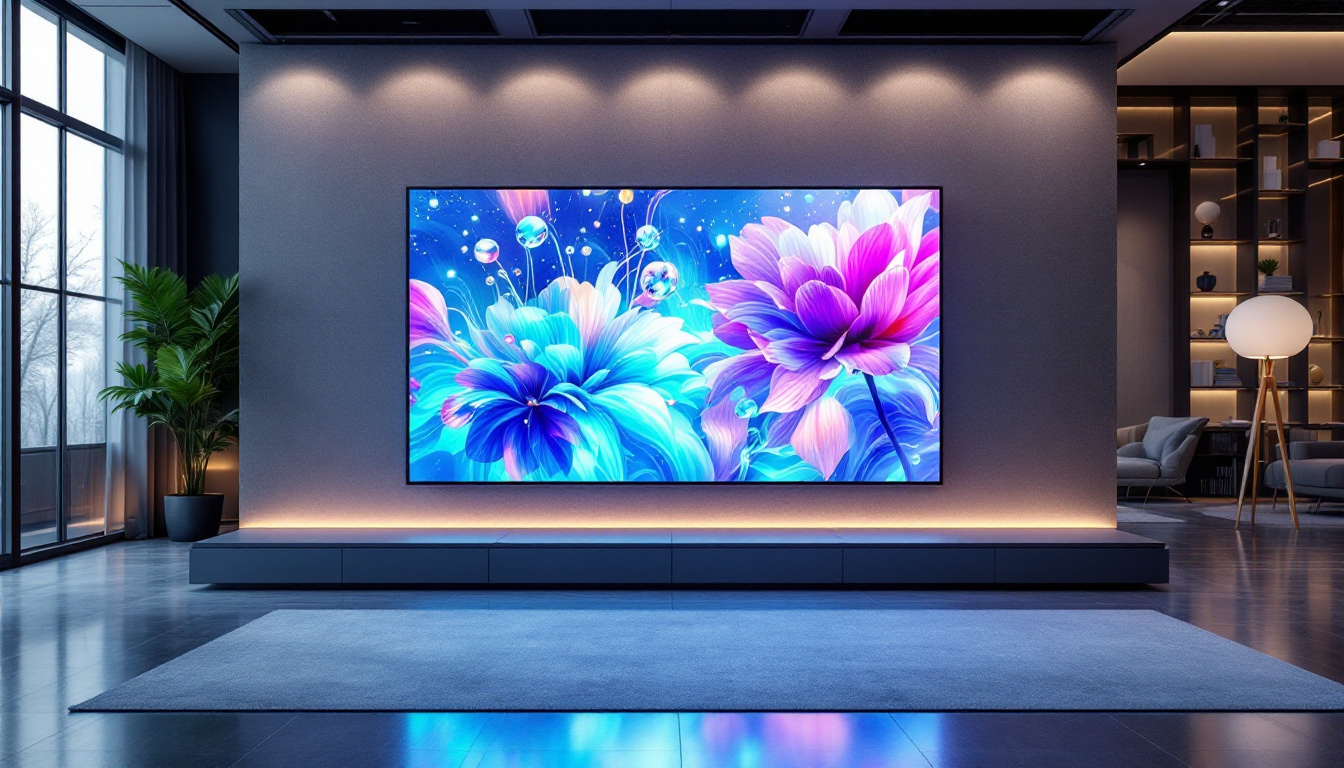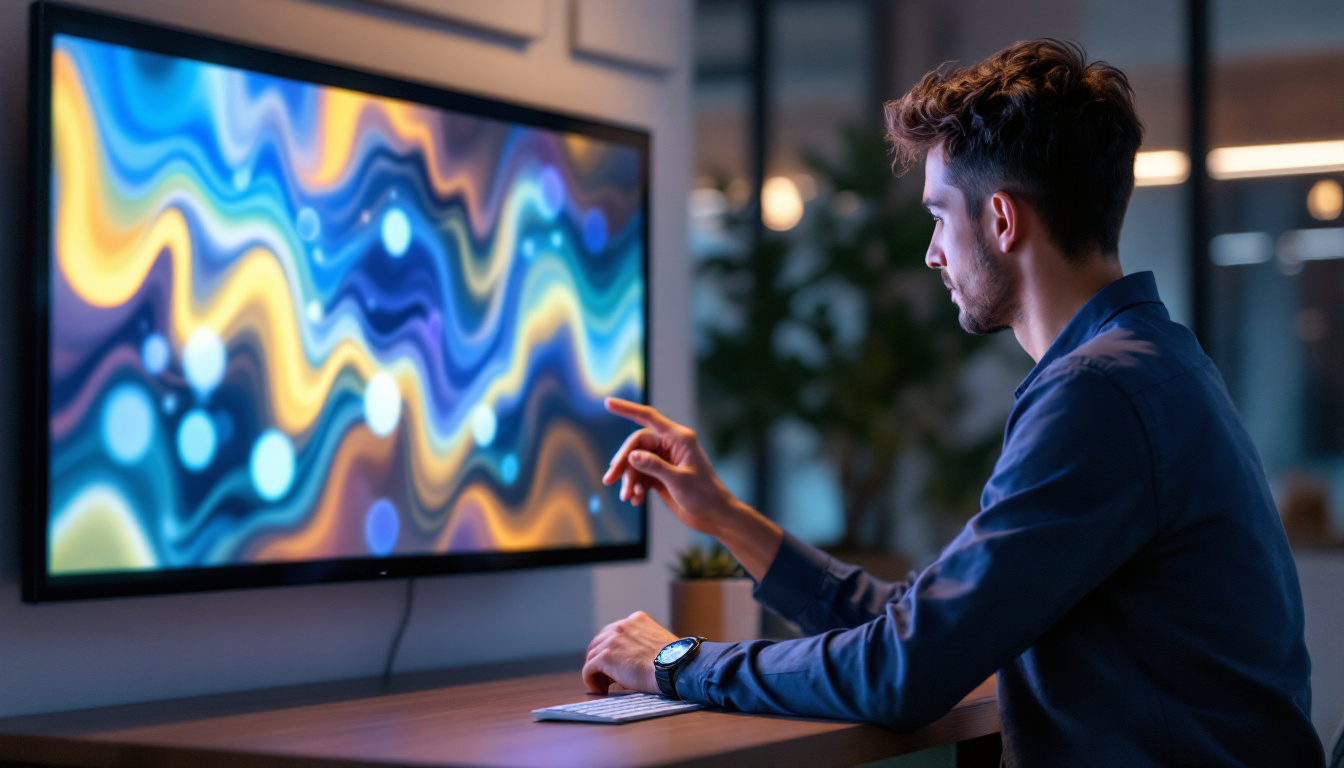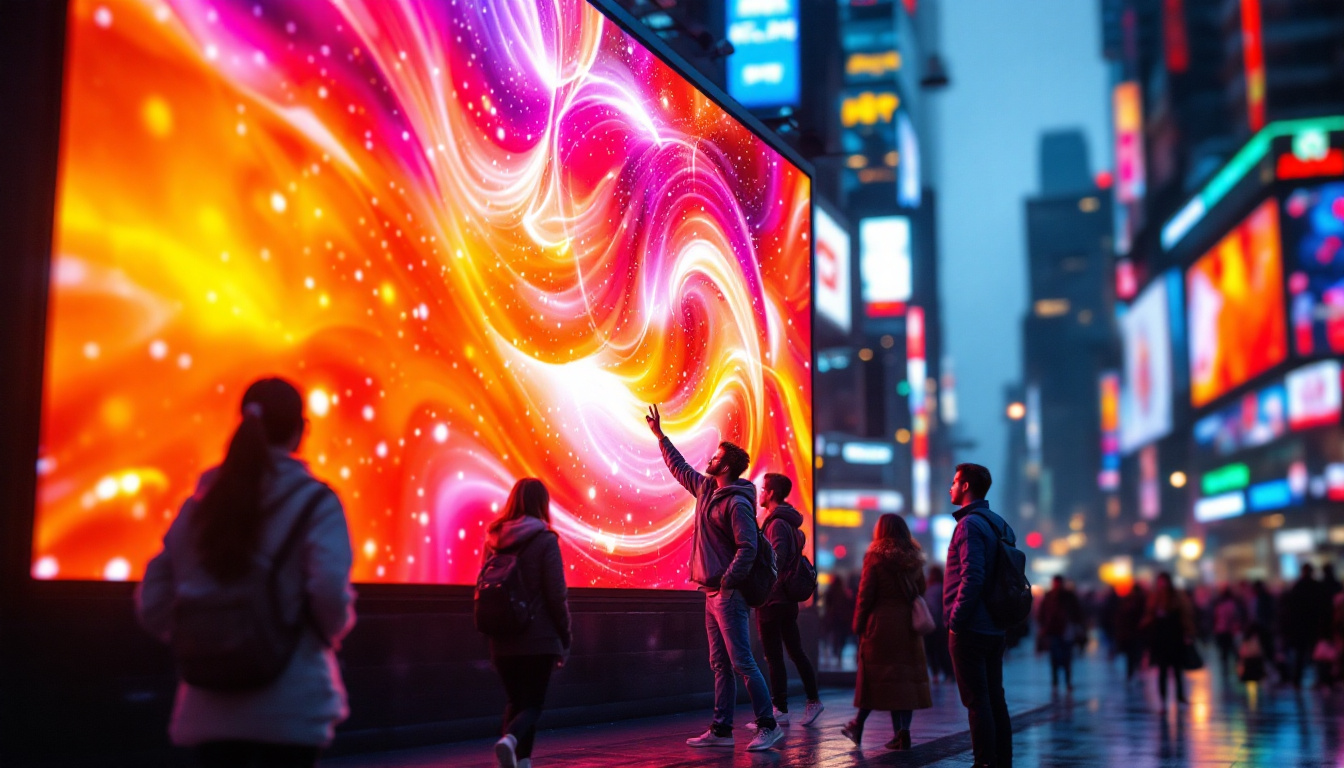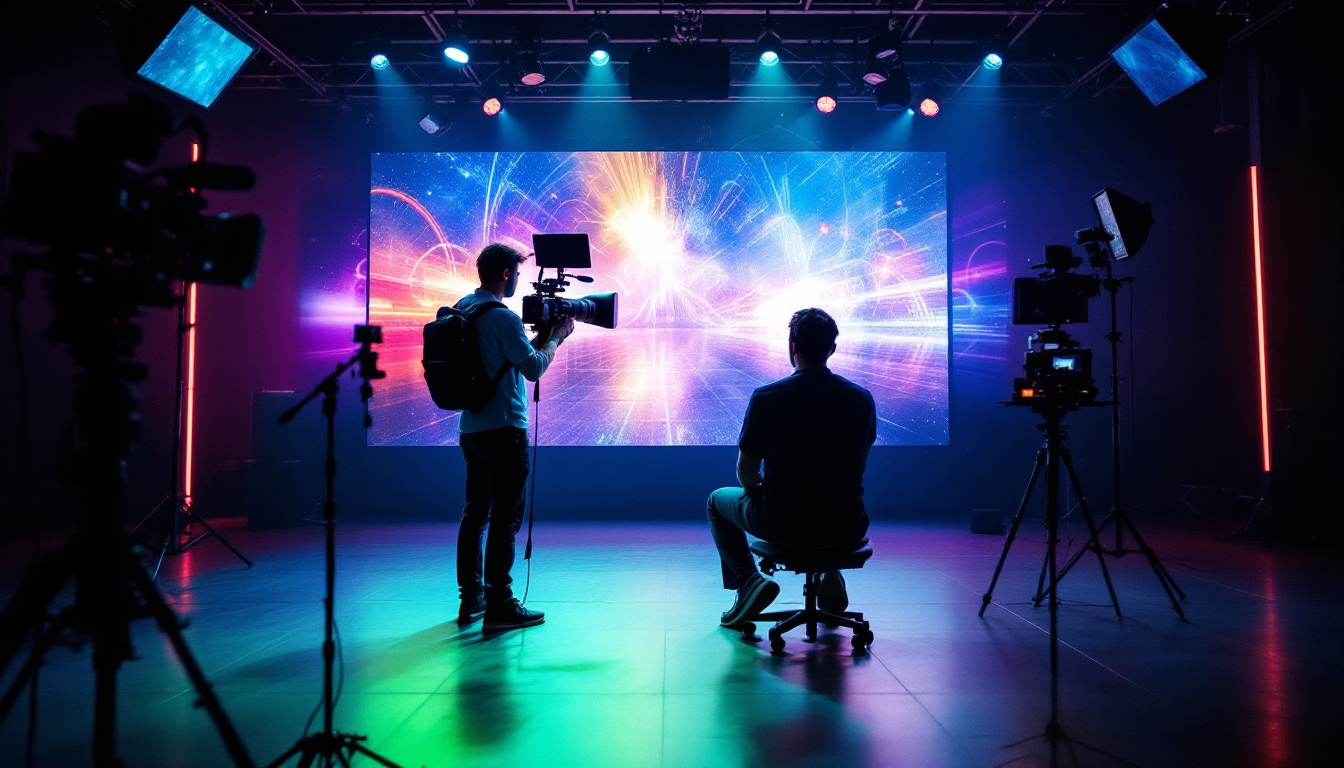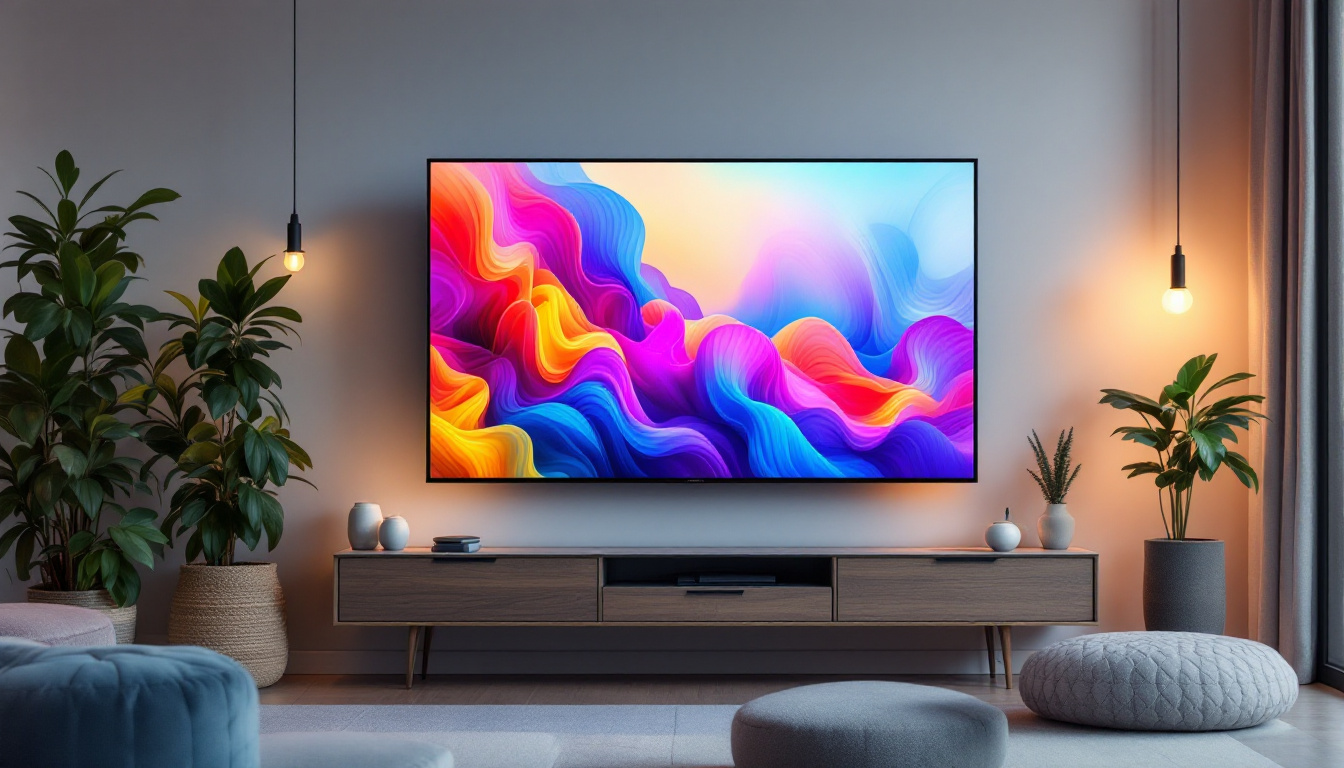In the world of modern technology, LED displays have revolutionized the way information is presented. Among the various types of LED displays, flexible screens stand out due to their unique capabilities and applications. This article delves into the intricacies of LED flexible screens, exploring their technology, benefits, applications, and future prospects.
Understanding LED Technology
LED, or Light Emitting Diode, is a semiconductor device that emits light when an electric current passes through it. This technology has evolved significantly over the years, leading to the development of various display types, including flat screens, curved screens, and flexible screens. The rise of LED technology has revolutionized the way we interact with visual media, making it more accessible and engaging than ever before. From televisions to smartphone screens, LEDs have become the standard for high-quality display solutions.
How LED Displays Work
At the core of LED displays are tiny diodes that emit light in different colors. These diodes are arranged in a grid format, where each pixel consists of red, green, and blue (RGB) components. By varying the intensity of these colors, a wide spectrum of hues can be produced, creating vibrant and dynamic images. This RGB combination allows for the creation of millions of colors, which is essential for achieving lifelike visuals in movies, games, and other multimedia applications.
In flexible LED displays, the diodes are mounted on a flexible substrate, allowing the screen to bend and conform to various shapes. This flexibility does not compromise the quality of the image; rather, it enhances the versatility of the display. For instance, flexible LED screens can be utilized in unique architectural designs, wrapping around columns or even curving to create immersive environments in retail spaces. This adaptability opens up new avenues for creative expression in advertising and design, pushing the boundaries of traditional display formats.
Types of LED Displays
LED displays can be categorized into several types, including:
- Direct View LED: These displays are made up of individual LED modules that can be arranged to form large screens. They are commonly used for outdoor advertising, sports arenas, and concerts, where high brightness and visibility are crucial.
- LED-backlit LCD: These displays use LED lights to illuminate an LCD panel, providing better brightness and contrast. This technology has become popular in televisions and monitors, as it allows for thinner designs while improving energy efficiency.
- Flexible LED: As the focus of this article, these displays can be bent and shaped, making them suitable for innovative applications. They are increasingly being used in wearable technology, such as smart clothing and accessories, where traditional rigid screens would be impractical.
In addition to these categories, there are also specialized LED displays designed for specific applications. For example, transparent LED displays allow for a see-through effect, making them ideal for retail windows and exhibitions where visibility from both sides is desired. Furthermore, microLED technology is emerging as a game-changer, offering even smaller diodes that can provide higher resolution and improved energy efficiency, paving the way for next-generation displays that could redefine our viewing experiences.
The Advantages of Flexible LED Screens
Flexible LED screens offer numerous advantages over traditional rigid displays. Their unique properties make them increasingly popular in various sectors, from advertising to entertainment.
Versatility in Design
One of the most significant benefits of flexible LED screens is their adaptability. They can be curved, rolled, or shaped to fit unconventional spaces. This flexibility allows designers and architects to create innovative installations that were previously unimaginable.
For instance, in retail environments, flexible screens can be integrated into store fixtures or displays, enhancing the shopping experience by providing dynamic content that attracts customers’ attention. Beyond retail, these screens are also transforming the world of art and exhibitions, allowing artists to create immersive environments that engage viewers in unique ways. Imagine walking through a gallery where the walls themselves are alive with shifting colors and patterns, all thanks to the seamless integration of flexible LED technology.
Lightweight and Thin
Compared to traditional display technologies, flexible LED screens are considerably lighter and thinner. This characteristic not only simplifies installation but also reduces shipping costs and energy consumption.
In applications such as wearable technology or portable devices, the lightweight nature of flexible screens is particularly advantageous, allowing for more comfortable and practical designs. Additionally, their slim profile enables manufacturers to create sleek, modern devices that appeal to consumers’ aesthetic preferences. As the demand for portable and space-saving technology continues to grow, flexible LED screens are poised to play a crucial role in the evolution of personal electronics, from smartphones to smart clothing.
Enhanced Durability
Flexible LED screens are often more durable than their rigid counterparts. The materials used in their construction can withstand bending and flexing, making them less prone to damage. This durability is especially beneficial in high-traffic areas or environments where screens may be subjected to physical stress.
Moreover, the resilience of flexible LED screens extends their lifespan, making them a cost-effective investment for businesses. In outdoor applications, such as digital billboards or signage, these screens can endure harsh weather conditions while maintaining high performance. Their ability to resist impact and environmental factors means that companies can rely on them for continuous operation, reducing the frequency of replacements and repairs. This durability not only contributes to lower maintenance costs but also aligns with sustainability goals by minimizing electronic waste.
Applications of Flexible LED Screens
The versatility of flexible LED screens has led to their adoption across various industries. Their ability to adapt to different environments and requirements makes them suitable for a wide range of applications.
Advertising and Marketing
In the advertising sector, flexible LED screens are increasingly used for dynamic advertisements. Their ability to display vibrant colors and animations captures the attention of potential customers more effectively than static displays.
Moreover, these screens can be installed in unconventional locations, such as on the sides of buildings or in the shape of creative installations, further enhancing brand visibility and engagement.
Entertainment and Events
Flexible LED screens have made a significant impact in the entertainment industry. They are frequently used in concerts, festivals, and events to create immersive experiences. The ability to bend and shape these screens allows for creative stage designs that enhance the overall aesthetic.
Additionally, flexible screens can be used in theaters and cinemas to create dynamic backdrops or to enhance the storytelling experience through visual effects.
Healthcare and Education
In healthcare, flexible LED displays can be utilized for patient information systems, enhancing communication in hospitals and clinics. Their adaptability allows them to be integrated into various environments, from waiting rooms to operating theaters.
In educational settings, flexible screens can facilitate interactive learning experiences. They can be used to create engaging presentations or to display educational content in a visually appealing manner.
Challenges and Considerations
While flexible LED screens offer numerous advantages, there are also challenges associated with their use. Understanding these challenges is crucial for organizations considering the adoption of this technology.
Cost Factors
One of the primary challenges of flexible LED screens is their cost. The technology is still relatively new, and the manufacturing processes can be expensive. As a result, the initial investment for flexible LED displays may be higher than that of traditional displays.
However, as technology advances and production scales up, costs are expected to decrease, making flexible screens more accessible to a broader range of consumers and businesses.
Technical Limitations
Despite their many benefits, flexible LED screens may have some technical limitations. For instance, the resolution and brightness levels may not always match those of high-end rigid displays. This can affect their performance in certain applications, particularly in outdoor environments where visibility is crucial.
Additionally, the technology is still evolving, and ongoing research is required to address these limitations and enhance the overall performance of flexible LED displays.
The Future of Flexible LED Screens
The future of flexible LED screens looks promising, with ongoing advancements in technology and materials. As research continues, several trends are expected to shape the development of flexible displays.
Advancements in Materials
Researchers are exploring new materials that can enhance the performance and durability of flexible LED screens. Innovations in organic light-emitting diodes (OLEDs) and quantum dots are paving the way for brighter, more efficient displays that can be produced at a lower cost.
These advancements will likely lead to the creation of even more versatile and adaptable screens, expanding their applications across various sectors.
Integration with Smart Technology
As smart technology continues to evolve, flexible LED screens are expected to integrate seamlessly with other devices. This integration could lead to the development of interactive displays that respond to user input, creating more engaging experiences.
For example, in smart homes, flexible screens could be used as part of a home automation system, displaying information or controlling devices through touch or gesture recognition.
Sustainability Initiatives
With growing concerns about environmental sustainability, the future of flexible LED screens may also focus on eco-friendly practices. Manufacturers are likely to prioritize sustainable materials and production processes, reducing the environmental impact of display technology.
Additionally, the energy efficiency of LED technology makes it a more sustainable choice compared to traditional display technologies, further supporting the shift towards greener solutions.
Conclusion
Flexible LED screens represent a significant advancement in display technology, offering unparalleled versatility and adaptability. Their ability to conform to various shapes and sizes opens up a world of possibilities across multiple industries, from advertising to healthcare.
While challenges such as cost and technical limitations exist, ongoing research and innovation are expected to address these issues, paving the way for a brighter future for flexible LED displays. As technology continues to evolve, the potential applications and benefits of flexible LED screens will undoubtedly expand, making them an integral part of the digital landscape.
In conclusion, the rise of flexible LED screens is not just a trend; it is a transformative shift that is reshaping how information is presented and experienced. As industries embrace this technology, the possibilities are endless, and the future looks bright.
Discover the Future of Visual Display with LumenMatrix
Ready to embrace the transformative power of flexible LED screens and revolutionize your visual communication? LumenMatrix is at the forefront of LED display innovation, offering a diverse range of solutions tailored to your unique needs. From Indoor and Outdoor LED Wall Displays to Custom and All-in-One LED solutions, our products are designed to captivate audiences and amplify your message. Experience the cutting-edge in LED technology and enhance your brand’s visibility with LumenMatrix. Check out LumenMatrix LED Display Solutions today and step into a brighter, more engaging future.

